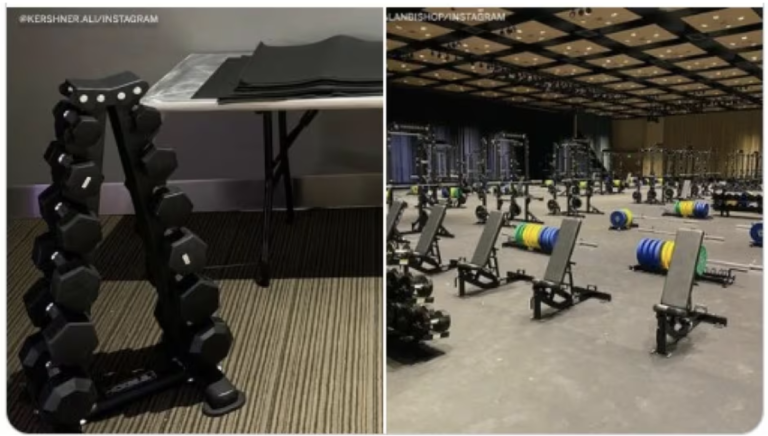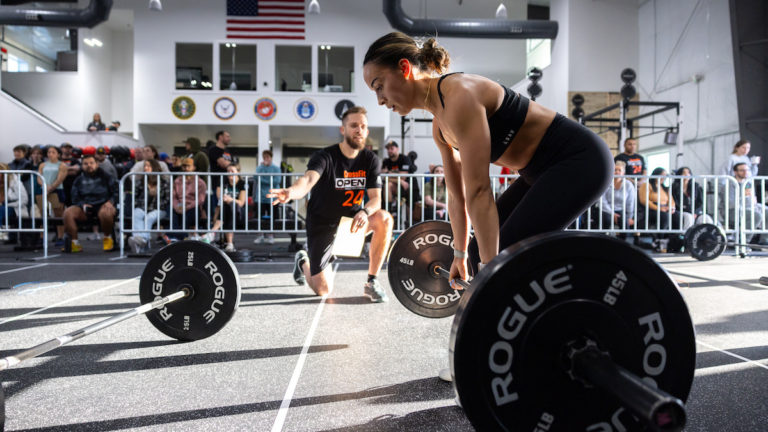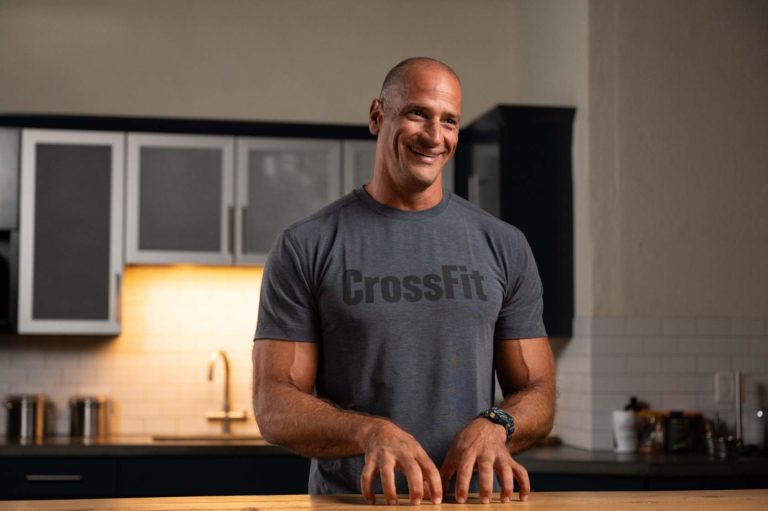During the 2021 men’s and women’s college basketball tournaments, the NCAA was criticized for the disparity in each event’s on-site strength and conditioning facilities.

This photo shows the men were provided with a state-of-the-art facility where actual strength training could be accomplished, while the women were provided a small rack of light dumbbells. While the NCAA apologized profusely and upgraded the women’s facilities, this embarrassing oversight highlights a common, persistent, and completely erroneous perception that strength training is not a critical part of a fitness program for women. Regardless of what our critics say, they can’t say CrossFit hasn’t contributed tremendously to advancing strength-and-conditioning opportunities and results for women.
CrossFit has always been a huge proponent of strength training for women. Our use of a wide variety of functional movements combined with our commitment to technique, intensity, and regularly programmed heavy days leads to the development of impressive strength levels in our athletes — both men and women. We believe strength training is critical to developing elite health and fitness, so strength work is an integral part of the program.
Women who do CrossFit use barbells, lots of weight, and heavy dumbbells and kettlebells just like their male counterparts. They work on gymnastics rings when even the sport of gymnastics doesn’t include this apparatus for women. Walk into a CrossFit affiliate, and you’ll see men and women of all ages and abilities working on a wide array of calisthenics, and deadlifts, presses, squats, and Olympic lifts with heavy loads, even near maximal. They are being coached, working on displaying great technique, and moving weight that astonishes the curious onlooker.
Imagine what a 45-year-old female CrossFit athlete who can snatch 135 lb, deadlift 265 lb, and back squat 250 lb can do outside the gym. While these are solid numbers, they are as common for women who do CrossFit as they are unthinkable for women who don’t.

Building strength is critical because it is a foundational quality that enhances many other aspects of our fitness and health. A Google search of the “benefits of strength training” reveals this list:
- Muscular strength and hypertrophy: strength training increases muscle mass and strength, improving physical performance and reducing the risk of injuries.
- Improved metabolism: muscle tissue burns more calories at rest, increasing metabolic rate and potentially aiding in weight loss.
- Enhanced mobility and flexibility: strength training exercises help improve joint range of motion and flexibility, reducing stiffness and pain.
- Stronger bones: resistance training stimulates bone formation, reducing the risk of osteoporosis and fractures.
- Improved cardiovascular health: strength training can lower blood pressure, improve cholesterol levels, and reduce the risk of heart disease.
- Enhanced brain function: studies suggest strength training may boost cognitive function and protect against age-related cognitive decline.
- Reduced risk of chronic diseases: strength training has been linked to a lower risk of chronic diseases such as diabetes, cancer, and obesity.
- Improved mental health: exercise, including strength training, can release endorphins that improve mood and reduce stress levels.
- Enhanced self-esteem: achieving physical goals through strength training can boost confidence and self-esteem.
- Overall quality of life: strength training contributes to a higher overall quality of life by improving physical ability and mental well-being and reducing the risk of chronic diseases.
We can add to this list of benefits that strength is instrumental in helping athletes get work done. In fact, by defining strength as the “productive application of force,” CrossFit marries muscular force and sound technique with task accomplishment. This view of strength doesn’t just consider the size of muscles or how hard they contract. Instead, the emphasis is on what the athlete can actually do. By this definition, a female who can complete a muscle-up is stronger (in this specific instance) than her male counterpart who cannot — no matter how large his muscles are. This is the real-world application of strength training, and our athletes demonstrate it inside and outside the gym every day. We can label this benefit, “the ability to kick butt.”
Traditionally, when it comes to fitness, women have been expected to lean toward aerobic training, flexibility, and “toning.” There’s nothing wrong with Pilates, yoga, boot camps, or spin classes. If the choice is one of those activities or sitting on the couch, we’ll support movement every time. However, none of these modalities offer the benefits of a complete strength and conditioning program that includes dedicated strength training.
We believe a program does not provide true functional fitness if it does not include barbells, racks, and piles of weights. Just as metabolic conditioning, gymnastics skills, and learning and playing new sports are necessary for total health, so is building strength. Those following a program that leaves one of these elements out or specializes in only one — for males or females — are missing out. Individuals of all ages, levels, and abilities will not achieve anywhere near the level of health and fitness without the same emphasis on strength CrossFit endorses. Those who trust us to develop their health and fitness should have access to the best methods possible so they can enjoy the amazing results they deserve.
About the Author
 Stephane Rochet is a Senior Content Writer for CrossFit. He has worked as a Flowmaster on the CrossFit Seminar Staff and has over 15 years of experience as a collegiate/tactical strength and conditioning coach. He is a Certified CrossFit Trainer (CF-L3) and enjoys training athletes in his garage gym.
Stephane Rochet is a Senior Content Writer for CrossFit. He has worked as a Flowmaster on the CrossFit Seminar Staff and has over 15 years of experience as a collegiate/tactical strength and conditioning coach. He is a Certified CrossFit Trainer (CF-L3) and enjoys training athletes in his garage gym.
Strong Women Are the Standard